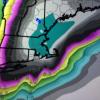-
Posts
74,734 -
Joined
-
Last visited
Content Type
Profiles
Blogs
Forums
American Weather
Media Demo
Store
Gallery
Everything posted by 40/70 Benchmark
-
Still a shot at some garbage inverted terd, too....can never entirely close the door on those things.
-
LOL Yea, drink 'til its cute-
-
I'll still take that if it results in more 30"ers that pork me with 13". I'll gladly trade a few 6"ers that leave me with 3".
-
Location of the greatest SST anomalies in the crudest sense..you can also look at OLR and VP. I have plenty on that in my outlooks. But I don't mean to imply that there aren't exceptions...obviously nothing operates in a vacuum and there are other hemispheric drivers to consider, but ENSO structure is a key player assuming decent intensity. The position isn't as important for very weak events because obviously the forcing is weaker, thus the relationship is more diffuse.
-
It's not a crap shoot....especially once they have some intensity. It determines where the forcing sets up to a large extent.
-
89-90 would fit right in with my current strings of winter....lame and unremarkable, but not awful.
-
No....probably moderate or strong (not super).
-
No way. That was east-based. Pretty confident it will be west-based.
-
Well, its done a pretty good job predicting my future for nearly 5 years.
-
I'd kill for one right now, which is saying something...
-
Good point.






